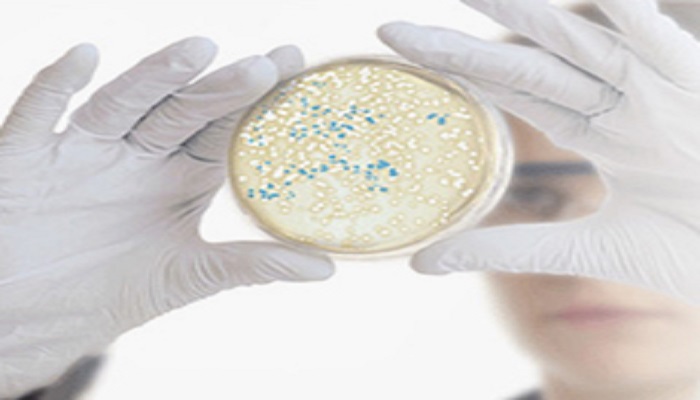Transformation is a basic technique of biotechnology to develop transformed cells (bacterial, plant or animal cell) containing a foreign DNA fragment in their genome. The foreign DNA incorporates in cellular genome in such a way that genes of foreign DNA express themselves. Therefore, the organism or cell is termed as transformed cell. Consequently, the transformed cells produce the gene product. Selection of transformed cells is further step of cell transformation technique. The researchers ‘select’ those cells with foreign gene in their genome. Or we can say the ‘transformed cell’ only for further analysis and studies.
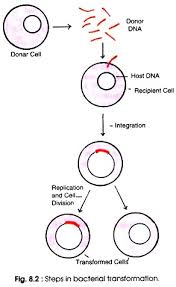
Why do we need to ‘select’ the transformed cells?
Transforming efficiency is the measure of rate at which the cells incorporate the foreign DNA in their genome. Usually the efficiency is not the too high or 100%. Therefore, it may affect the basic purpose of transformation, which is to obtain maximum of gene product. So to obtain maximum possible yield, it is important to separate or select the transformed cells from those which remain untransformed.
Methods for selection of transformed cells
These are some selection methods for the transformed cells:
1. Antibiotic Resistance Genes
In this method, the cell cultures are provided with the antibiotic resistance genes. Those who get transformed become resistant to that particular antibiotic if present in the surrounding media. While the untransformed cells not being resistant to antibiotic die. These genes actually act as selectable marker genes.
Genetic markers are the fragments or sequences of DNA whose location on chromosome is already known and they are used to identify some particular sequences in genome of the organism.
For example, if the bacterial cell is incorporated with the ampicilin resistant gene and after sometime the medium is provided with the ampicilin gene, the untransformed cells will not be able to neutralize the toxic effects of antibiotic and so they will die leaving behind the transformed cells only.
Selectable marker genes for plant cells
Neomycin phosphotransferase 2 and hygromycin phosphotransferase are two most widely used antibiotics for the transformed plant cells selection. Gentamycin actyltransferase is another effective gene for the plant cells transformations. Some of the antibiotics like kanamycin does not suit well for the selection purpose because of their harmful effects on some parts of plant after transformation.
2. Scorable Marker Genes
These genes are also termed as the reporter genes are similar in their usage as the marker genes but more helpful as they are expressed in the host cell without incorporating into it.
When the gene enters the host cell, it expresses itself without being a part of the host genome. So the identification of the transformed cells is relatively easy.
Scorable marker genes for plants and animal cells
GUS 12 –glucuronidase is the reporter gene which serves the purpose to identify the transformed cells of plants. Moreover, the researchers also use LUC firefly luceferase gene and the green fluorescent genes to identify the animal transformed cells.
These genes help to select the transformed cells and also to study the expression of each gene in particular type of host cell.
3. Blue- White Screening Method
This is another method to select the transformed cells or colonies based upon the fact that the inserted gene produces colored colonies. In genome of E.coli, a lacz gene is inserted that is a required for β-glycosidase enzyme. The medium is provided with x-gel that is analogue to lactose. The cells having the foreign gene will be able to hydrolyze the x-gel as source of nutrition and this will produce blue pigmentation in the media. An empty vector will show blue colored colonies which indicates that the enzyme has not hydrolyzed the x-gel in media. This is how, this method selects the bacterial transformed cells with lacZ gene.
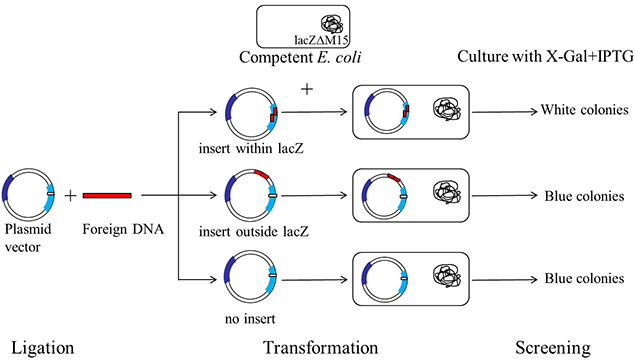
4. Use of Radioactive Probe For Selection
This method applies a radioactive probe such as 32p-m RNA. The probe hybridizes with the gene of interest present in cellular genome. In the next step, X-ray diffraction technique helps in selection of the transformed cells.
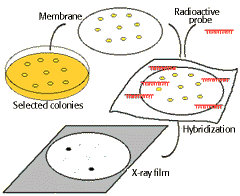
5. Positive Selection Vectors Method
This method uses a gene that disrupts the normal functioning if cell such as use of restriction enzymes that digests the genomic DNA of the host cell. The gene sequence disrupt the enzymatic function so as the cellular DNA remains intact. Only the cells with this gene (that restricts the enzymatic digestion of DNA) undergo transformation. Only these will survive and grow in media while the other will die. This technique is useful and more efficient as it yield 99% results.
Sequencing is another method for selection of transformed cells or colonies. The sequencing technique involves extraction of cellular DNA. Later, polymerase chain reaction PCR amplifies this DNA for further analysis. However, PCR is applicable for fragment of 3kb.
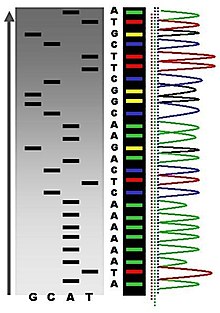
The method is time consuming as well. Overall it helps in recognition of recombinant or transformed genome for selection.
6. Morphological Analysis for transformed cells
There are many other morphological differences of the transformed and untransformed cells. Analysis and observation of the colonies can help in selection of transformed cells.
- Transformed cells are not anchorage dependent as the untransformed cells require a substratum. The normal cells divide continuously when attached to substrate. While untransformed cells can divide in suspension as well as when attached to substrate with equal ease.
- The transformed cells can have abnormal number of chromosomes. For example, in plant cells this condition is termed as aneuploidy. The genetic engineers use aneuploidy approach to develop recombinant crops and plants. Similarly the transformed cells of organism can have abnormal number of chromosomes. The untransformed cells have diploid, normal number of chromosomes.
- Cells or colonies have a particular shape when growing on media. The transformed cells are unable to maintain that particular morphology of the colony that the untransformed cells have. So the analysis of shape of the colonies can be useful for selection of the transformed cells. For example the IMR 90 the primary human fibroblast cells form elliptical colonies on culture plate.
Bottom line
There are many methods for the selection of the transformed cells forms the untransformed cells. Which method of selection is suitable for the particular type of transformed cells depends on several factors. Such as the time required for results, type of the cells for transformation as well as the efficiency of each method.
